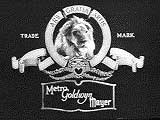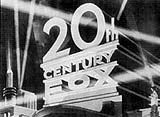The Legend of Hollywood
Hollywood, California - where, beginning a century ago, the great American dream burst out of our collective subcoscious and into the open. There is no other name that frees our fantasies and stirs our hopes and fears, our tears and our eternal romances, like that single incomparable word - Hollywood.
Before The Movies
In the seventeenth century when Spanish explorers first entered the area now known as Hollywood, Native Americans had been living in the canyons of the Santa Monica Mountains since time immemorial. Before long, the Indians had been moved to missions and the land which Hollywood now occupies was divided in two by the Spanish Government. Acreage to the west became part of Rancho La Brea and settlements to the East became Rancho Los Feliz.

By the 1870s an agricultural community flourished in the area and crops ranging from hay and grain to subtropical bananas and pineapples were thriving. During the 1880s, the Ranchos were sub-divided. Harvey Henderson Wilcox of Kansas, who made a fortune in real estate even though he had lost the use of his legs due to typhoid fever, and his wife, Daeida who was originally from Hicksville, Ohio, moved to Los Angeles from Topeka. In 1886, Wilcox bought 160 acres (0.6 km²) of land in the countryside to the west of the city at the foothills and the Cahuenga Pass. Within a few years, Wilcox had devised a grid plan for his new community, paved Prospect Avenue (now Hollywood Boulevard) for his main street and was selling large residential lots to wealthy Midwesterners looking to build homes so they could "winter in California."

There is some disagreement as to who was the first to name the place Hollywood. One account says that the name was coined by H. J. Whitley, the Father of Hollywood. He and his wife Gigi reportedly came up with the name in 1886 while on their honeymoon (from Margaret Virginia Whitley's memoir). Another account is that Mrs. Wilcox coined the name in 1883; while on a train she became acquainted with a wealthy lady who often spoke of her country home named after a settlement of Dutch immigrants from Zwolle called "Hollywood", and when she returned to Los Angeles she so named her country place.
Harvey's subdivisions soon became a town with streets named and paved and commercial ventures encouraged. Wilcox died in 1891 but Daeida carried on with their dream. She donated land for 3 churches, the first library and city hall, a park and a school and even a police station. But liquor was still outlawed in the community. In 1894 Daeida remarried and, with her new husband Philo J. Beveridge (the governor's son) she continued to help Hollywood grow.
Prospect Avenue soon became a prestigious residential street populated with large Queen Anne, Victorian, and Mission Revival houses. Mrs. Wilcox raised funds to build churches, schools and a library and Hollywood quickly became a complete and prosperous community. The community incorporated in 1903, but its independence was short-lived, as the lack of water forced annexation in 1910 to the city of Los Angeles, which had a surplus supply of water.
Hollywood, 1905

Hollywood Hotel

In early 1910, director D. W. Griffith was sent by the Biograph Company to the west coast with his acting troop consisting of actors Blanche Sweet, Lillian Gish, Mary Pickford, Lionel Barrymore, and others. They started filming on a vacant lot near Georgia Street in Downtown Los Angeles. The Company decided to explore new territories and traveled several miles north to a little village that was friendly and enjoyed the movie company filming there. And, you've guessed it, this place was called "Hollywood". Griffith then filmed the first movie ever shot in Hollywood called, aptly enough, 'In Old California', a Biograph melodrama about Latino-Mexican occupied California in the 1800s. The movie company stayed there for months and made several films before returning to New York.

The Hollywood Industry Develops
In the early 1900s, when the medium was new, many Jewish immigrants found employment in the U.S. film industry. They were able to make their mark in a brand-new business: the exhibition of short films in storefront theaters called nickelodeons, after their admission price of a nickel (five cents). Within a few years, ambitious men like Samuel Goldwyn, Carl Laemmle, Adolph Zukor, Louis B. Mayer, and the Warner Brothers (Harry, Albert, Samuel, and Jack) had switched to the production side of the business. Soon they were the heads of a new kind of enterprise: the movie studio. (It is worth noting that the US had at least one female director, producer and studio head in these early years, Alice Guy Blaché.)

Other moviemakers arrived from Europe after World War I: directors like Ernst Lubitsch, Alfred Hitchcock, Fritz Lang, and Jean Renoir; and actors like Rudolph Valentino, Marlene Dietrich, Ronald Colman, and Charles Boyer. They joined a homegrown supply of actors--lured west from the New York City stage after the introduction of sound films--to form one of the 20th century's most remarkable growth industries. At Hollywood's height of popularity in the mid-1940s, the studios were cranking out a total of about 400 movies a year, seen by an audience of 90 million Americans per week.
The Golden Age of Hollywood
During the so-called Golden Age of Hollywood, which lasted from the end of the silent era in American cinema in the late 1920s to the late 1940s, movies were issued from the Hollywood studios like the cars rolling off Henry Ford's assembly lines. Most Hollywood pictures adhered closely to a formula-Western, slapstick comedy, musical, animated cartoon, biopic (biographical picture)-and the same creative teams often worked on films made by the same studio. For instance, Cedric Gibbons and Herbert Stothart always worked on MGM films, Alfred Newman worked at Twentieth Century Fox for twenty years, Cecil B. De Mille's films were almost all made at Paramount, director Henry King's films were mostly made for Twentieth-Century Fox, etc. And one could usually guess which studio made which film, largely because of the actors who appeared in it. Each studio had its own style and characteristic touches which made it possible to know this - a trait that does not exist today. Yet each movie was a little different, and, unlike the craftsmen who made cars, many of the people who made movies were artists. For example, To Have and Have Not (1944) is famous not only for the first pairing of actors Humphrey Bogart (1899-1957) and Lauren Bacall (1924- ) but also for being written by two future winners of the Nobel Prize in Literature: Ernest Hemingway (1899-1961), author of the novel on which the script was nominally based, and William Faulkner (1897-1962), who worked on the screen adaptation.

Moviemaking was still a business, however, and motion picture companies made money by operating under the studio system. The major studios kept thousands of people on salary-actors, producers, directors, writers, stuntmen, craftspersons, and technicians. And they owned hundreds of theaters in cities and towns across the nation, theaters that showed their films and that were always in need of fresh material.

Many film historians have remarked upon the many great works of cinema that emerged from this period of highly regimented filmmaking. One reason this was possible is that, with so many movies being made, not every one had to be a big hit. A studio could gamble on a medium-budget feature with a good script and relatively unknown actors: Citizen Kane, directed by Orson Welles (1915-1985) and often regarded as the greatest film of all time, fits that description. In other cases, strong-willed directors like Howard Hawks (1896-1977) and Frank Capra (1897-1991) battled the studios in order to achieve their artistic visions. The apogee of the studio system may have been the year 1939, which saw the release of such classics as The Wizard of Oz, Gone with the Wind, Stagecoach, Mr. Smith Goes to Washington, Wuthering Heights, Goodbye, Mr. Chips, Only Angels Have Wings, Ninotchka, and Midnight. Among the other films from the Golden Age period that are now considered to be classics: Casablanca, It's a Wonderful Life, the original King Kong, and Snow White and the Seven Dwarfs.



No comments:
Post a Comment